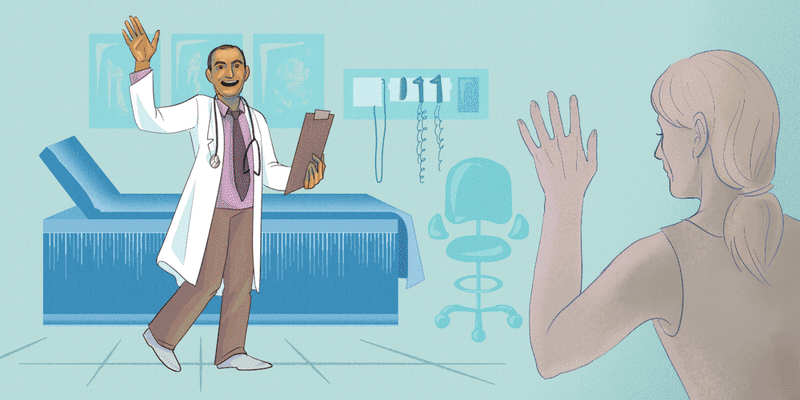In hospitals across America, a silent crisis is unfolding. Young doctors, fresh from years of rigorous training, find themselves caught between their passion for healing and the crushing weight of educational debt. With an average of $250,000 in student loans looming over them, many wonder if their dream of helping patients was worth the financial burden. This scenario is all too common, and it's time we addressed it head-on.
The rising cost of medical education, coupled with stagnant physician salaries, has created a perfect storm that threatens the future of health care in our nation. Bright, compassionate students are increasingly deterred from pursuing medicine, opting for more financially favorable fields. Those who do follow their calling often find themselves burned out and disillusioned, crushed under the weight of their educational debt. But what if there was a simple solution? What if we treated a physician's education the same way we treat other business investments?
Consider for a moment how we approach traditional business expenses. When a company invests in new equipment or employee training, those costs are tax deductible. The logic is simple – these are necessary expenditures that allow the business to generate income and contribute to the economy. Why, then, do we not extend the same consideration to the most critical investment in health care – the education of our physicians?
A medical degree is, in essence, an investment in human capital. It's a long, expensive process that transforms a bright young student into a skilled professional capable of saving lives. This investment benefits not just the individual but society as a whole. Yet unlike other business investments, the cost of this education is expected to be borne almost entirely by the student.
A feasible solution would be to allow recently graduated physicians to deduct a portion of their student loan payments from their taxable income each year. Another option is a direct tax credit for student loan payments, which would reduce the amount of taxes owed rather than just adjusting taxable income. This approach would ensure relief is meaningful and felt immediately.
Making student loan payments tax deductible for medical professionals could radically alleviate the leading stressors among young physicians. It would significantly reduce the financial burden on young doctors, allowing them to focus on patient care rather than worrying about making ends meet. This could have a profound impact on physician burnout, a growing crisis that threatens the quality of our health care system.
The prospect of a more manageable debt burden might encourage more students to follow their passion in less lucrative specialties, rather than being driven away by financial concerns. This could help address the looming physician shortage, particularly in primary care and underserved rural and urban areas where the need for doctors is most acute.
Critics might argue that such a policy would be too costly for the government. But we must consider the long-term benefits. By reducing the financial barriers to medical education, we could help ensure a robust and diverse physician workforce for the future. More doctors mean better access to health care and potentially reduced health care costs overall, as a larger physician workforce could drive down the price of medical services. This policy could strike a political middle ground in the student loan forgiveness debate as borrowers will still be held financially accountable for their loans, yet in a manner that would be significantly more manageable.
One way to implement this policy cost-effectively would be to phase it in based on specialty and location. For example, physicians working in primary care or underserved areas could receive a higher deduction rate or be eligible for a larger tax credit. This strategy would help alleviate the student loan burden while also creating incentives to address the maldistribution of physicians, particularly in rural communities. Another option is to cap the deduction at a reasonable annual amount, such as $50,000, ensuring relief is targeted without excessive costs to the government.
By alleviating some of the financial stress on doctors, we might see a reduction in burnout rates. Physician burnout is not just a personal tragedy, it's a public health crisis. Burned-out doctors are more likely to make medical errors, provide lower quality care, and leave the profession altogether. By supporting our doctors financially, we're investing in the quality and stability of our entire health care system.
Implementing this change would not be without challenges. We would need to carefully define which educational expenses qualify and set appropriate limits to prevent abuse. For instance, eligibility criteria could include a minimum service requirement in clinical practice, ensuring only actively practicing physicians benefit. A structured reporting system could be developed to track the impact of the policy on physician retention and burnout rates, allowing for future refinements. But these are surmountable obstacles, especially when weighed against the potential benefits. As we stand at the crossroads of a health care system under immense strain, we must think creatively about solutions. Tax deductions for medical student loan repayments may be a solution to this growing problem.
What feasible ways do you see for reducing financial burden on medical students? Share in the comments!
Forrest is a third-year medical student interested in rural medicine and how to best address the physician shortage in these areas, as well as being particularly interested in health policy and the way it is applied to different groups of people in the U.S.
Illustration by Jennifer Bogartz







